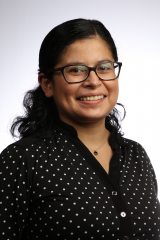Social Determinants of Health, Hospital-level Resources, and Risk of Septic Shock in Pediatric Leukemia
Institution:
Children’s Hospital of Philadelphia
Researcher(s):
Jenny Ruiz, MD
Grant Type:
Young Investigator Grants
Type of Childhood Cancer:
Leukemia
Project Description:
More and more children with leukemia are being cured of their cancer due to advancements of treatment options. These treatments can have serious side effects, including risk for life-threatening serious infections. Children who experience severe infections while being treated for leukemia have can die from these infections. Our group found differences in who gets serious infections by race, ethnicity, and insurance. We found that Black and Hispanic patients are more likely to get life-threatening infections than white patients. Children with Medicaid are more likely to get serious infections than those with private insurance. We think these disparities are signs of social inequality. One way to measure social inequality in health care outcomes is to look at “social determinants of health”. These include household income, poverty, education, neighborhood factors, and access to health care. We also showed that hospitals with high numbers of patients with public insurance (Medicaid) had more deaths during the first month of leukemia treatment. Hospitals with more Medicaid patients may not have as much money as other hospitals to hire nurses and other staff. This could lead to delays in recognizing a child who is getting sick with an infection. This study will look at how a child’s social determinants of health affect his/her risk of getting a severe infection during leukemia treatment. We will also study whether hospitals with fewer or lower-paid staff are more likely to have children get these severe infections.
Co-funded by:
Northwestern Mutual Foundation

